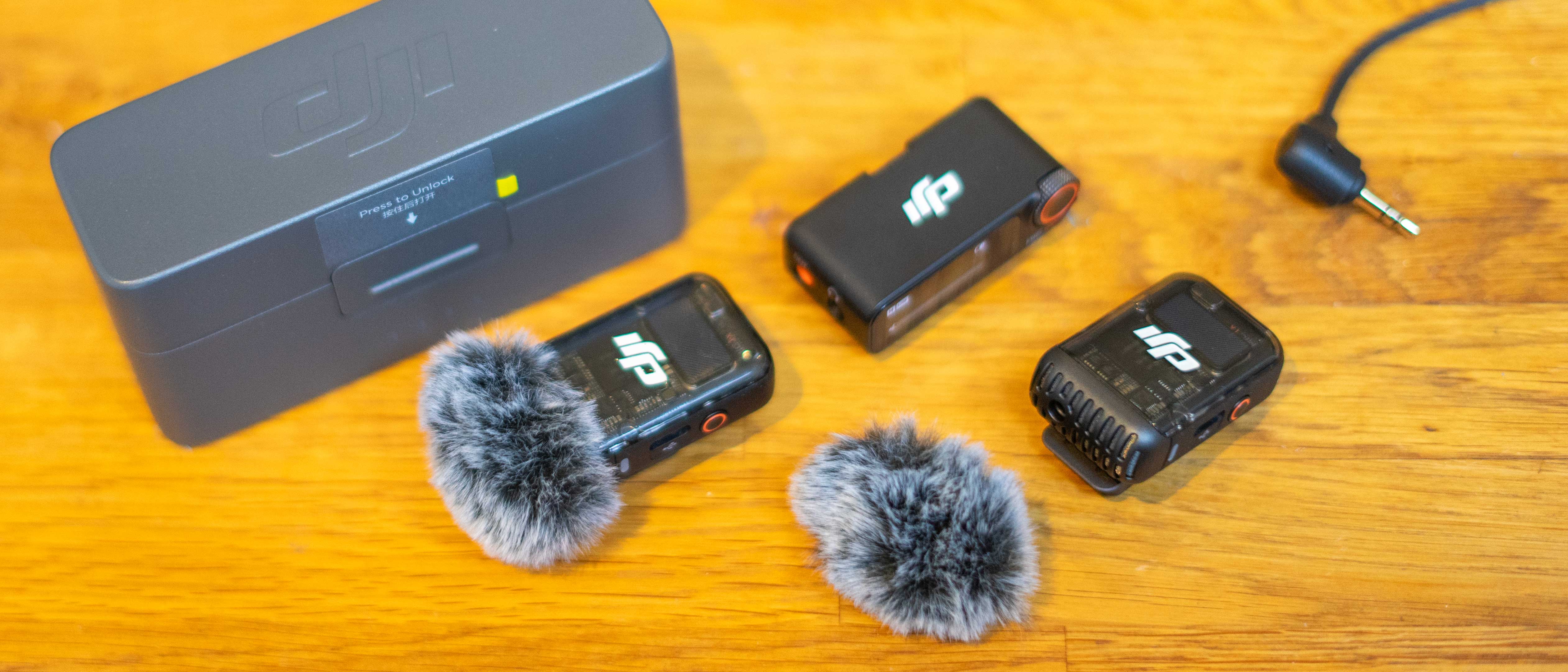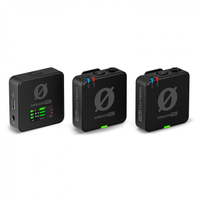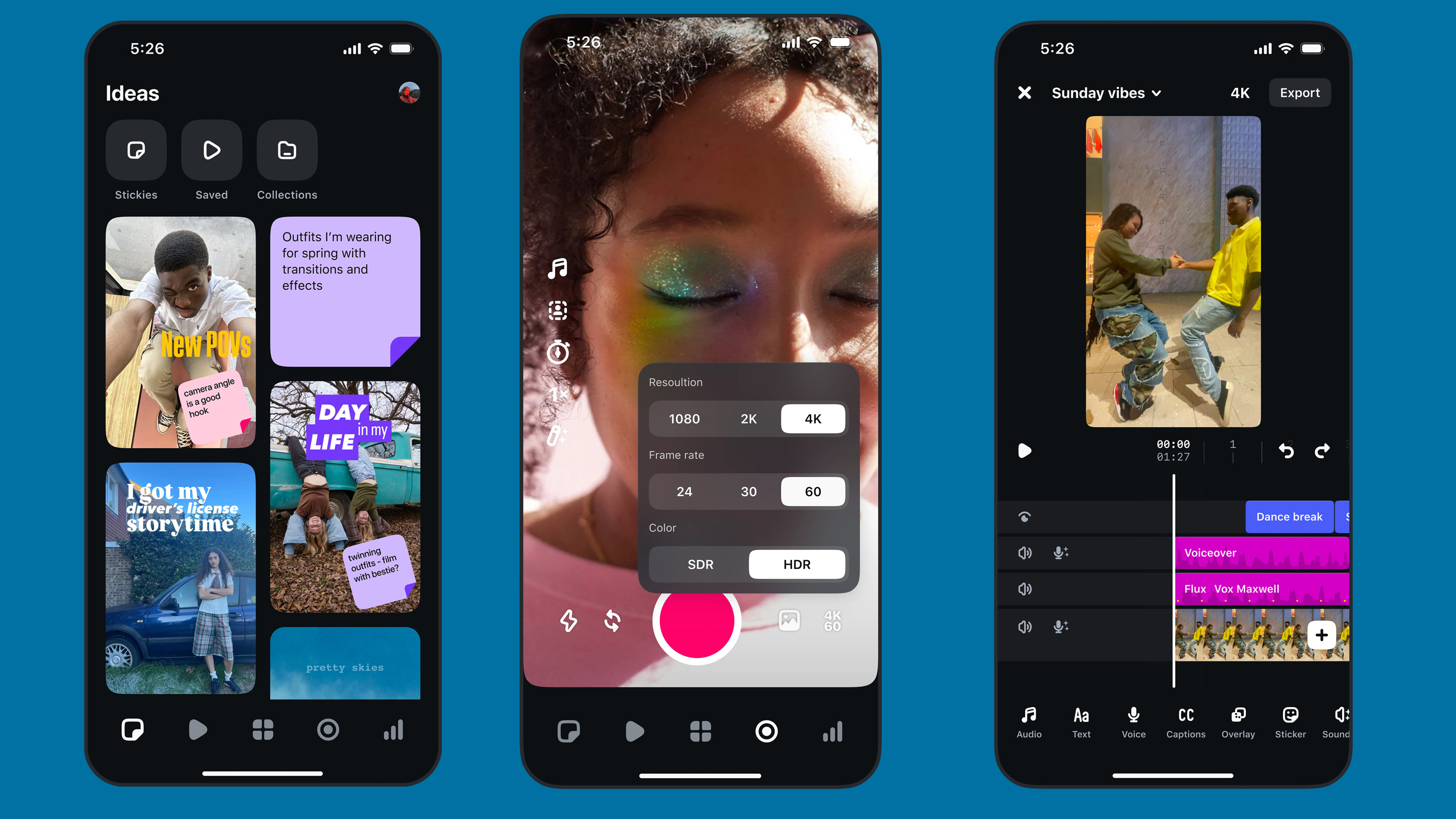Digital Camera World Verdict
Taking what was already a premium-quality product and pushing further, the DJI Mic 2 – especially in the full combo – feels excellent, with the only real worry being that it is overkill. The case is strong and safe, the device is good quality, anyone will be able to use it and pros should be happy to.
Pros
- +
Long-lasting battery
- +
32-bit float and safety channel options
- +
Beats the Røde Go II on features
- +
USB-C, Lightning (and wireless) for phone
Cons
- -
Not cheap (but competitive against the Røde Wireless Pro)
- -
Phone mounts can be quite a tight fit
Why you can trust Digital Camera World
As the name suggests, this isn't DJI's first foray into the microphone market, but it does follow very similar lines. The original DJI Mic dates back to 2022, and at the time offered a similar proposition to the Røde Wireless Go II system which emerged a year before that.
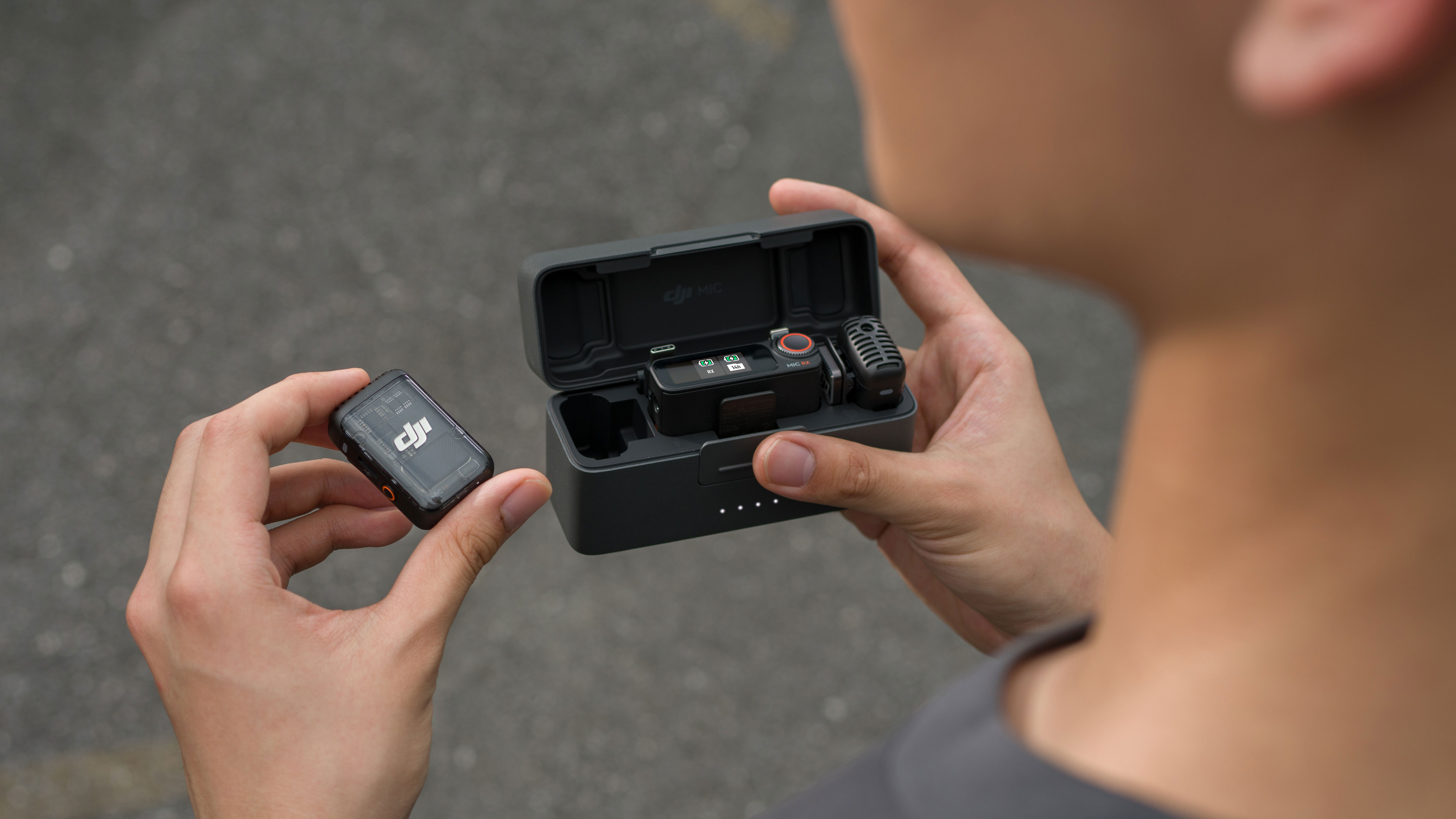
Pattern: Omnidirectional
Channel: Mono or Dual
Noise Cancelling: AI (new to Mic 2)
Gain adjustment: +/- 12
Range: 250m (USA) / 160m (EU/UK)
AOP: 120db (up from 114dB on Mic 1)
RX: Lightning/Type-C/Bluetooth to smartphone
The Mic 2's transmitter – which also houses the microphone – actually slipped out with a previous product launch, the DJI Osmo Pocket 3, which arrived just before the end of 2023. That's because one of the cool new features is the ability to act as a Bluetooth microphone and additional support is built right into the Pocket 3.
Now the whole shebang is available, receiver (RX) and mic/transmitter (TX). You can also opt for a plug-in Lavalier mic (the little clippy kind) so you can further hide the already-very-compact TX/mic unit.
For the new version, DJI have gone out of their way to improve many aspects of the tech. It now boasts AI noise cancelling, comes with a new RX that features a rotary dial controller as well as the touchscreen, and it can record 32-bit floating point WAVs.
The competition hasn't been stagnant either; in the meantime, Røde have brought out the Wireless Pro which also boasts 32-bit float recording. The question is, after this latest update, which offers the better choice (and the best value)?
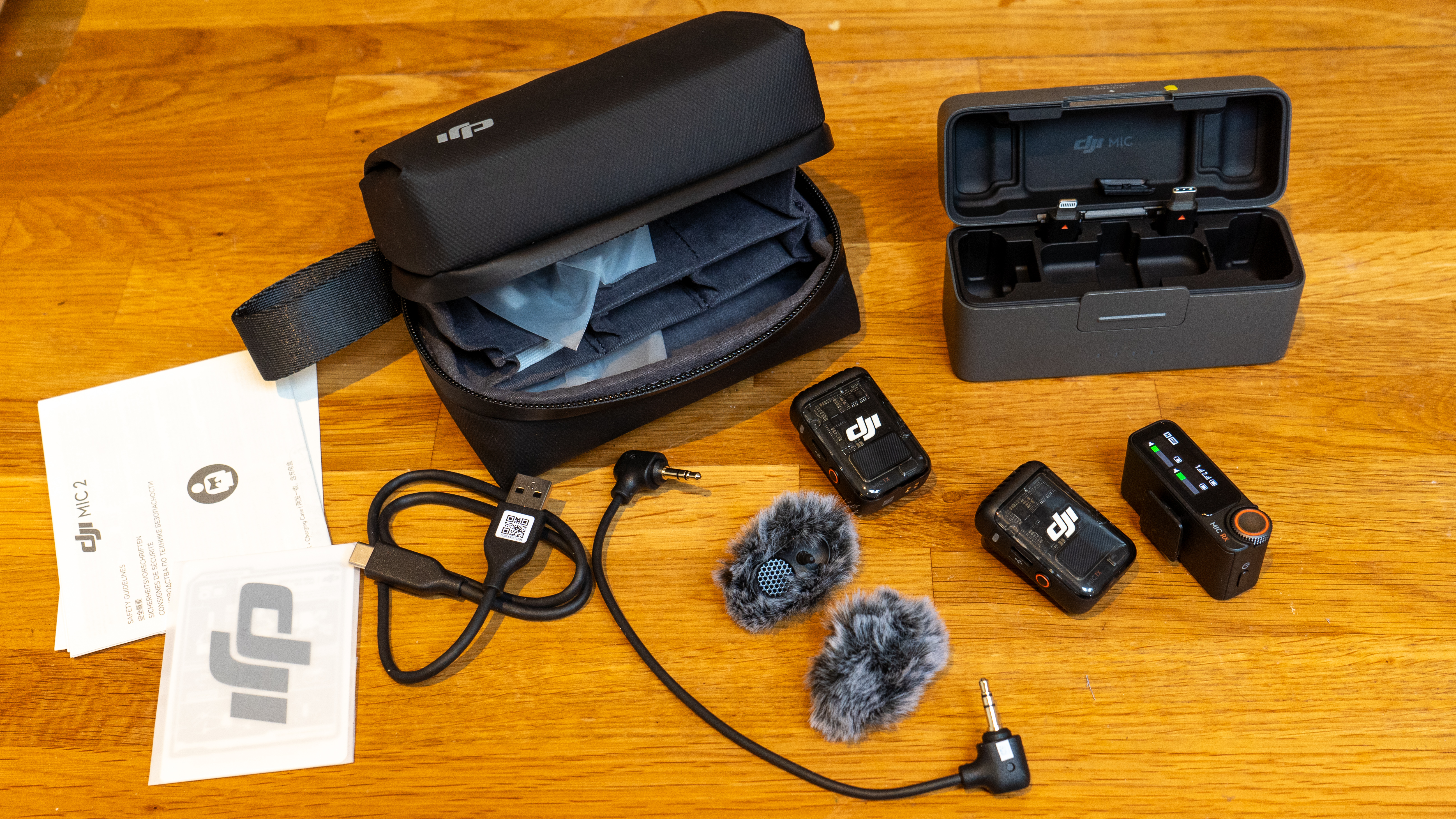
DJI Mic 2: Build and handling
The DJI Mic 2 has a new case which feels even more premium than its predecessor. It's metallic and cold to the touch, and adopts a broadly rectangluar design with rounded edges, but slightly is rougher and more textured than one of Apple's MacBooks. You don't need to worry about it skating away from you either; there are two good-sized rubber feet on the bottom which, in normal light, are perfectly color-matched (but are slightly less reflective than the rest of the body).
Atop this – yes, I'll say it, gorgeous – charging case (which you only get if you choose the larger bundle) you find a big and proud DJI logo; at the back there is a discrete USB-C socket for charging, while at the front there is a mechanical hinge.
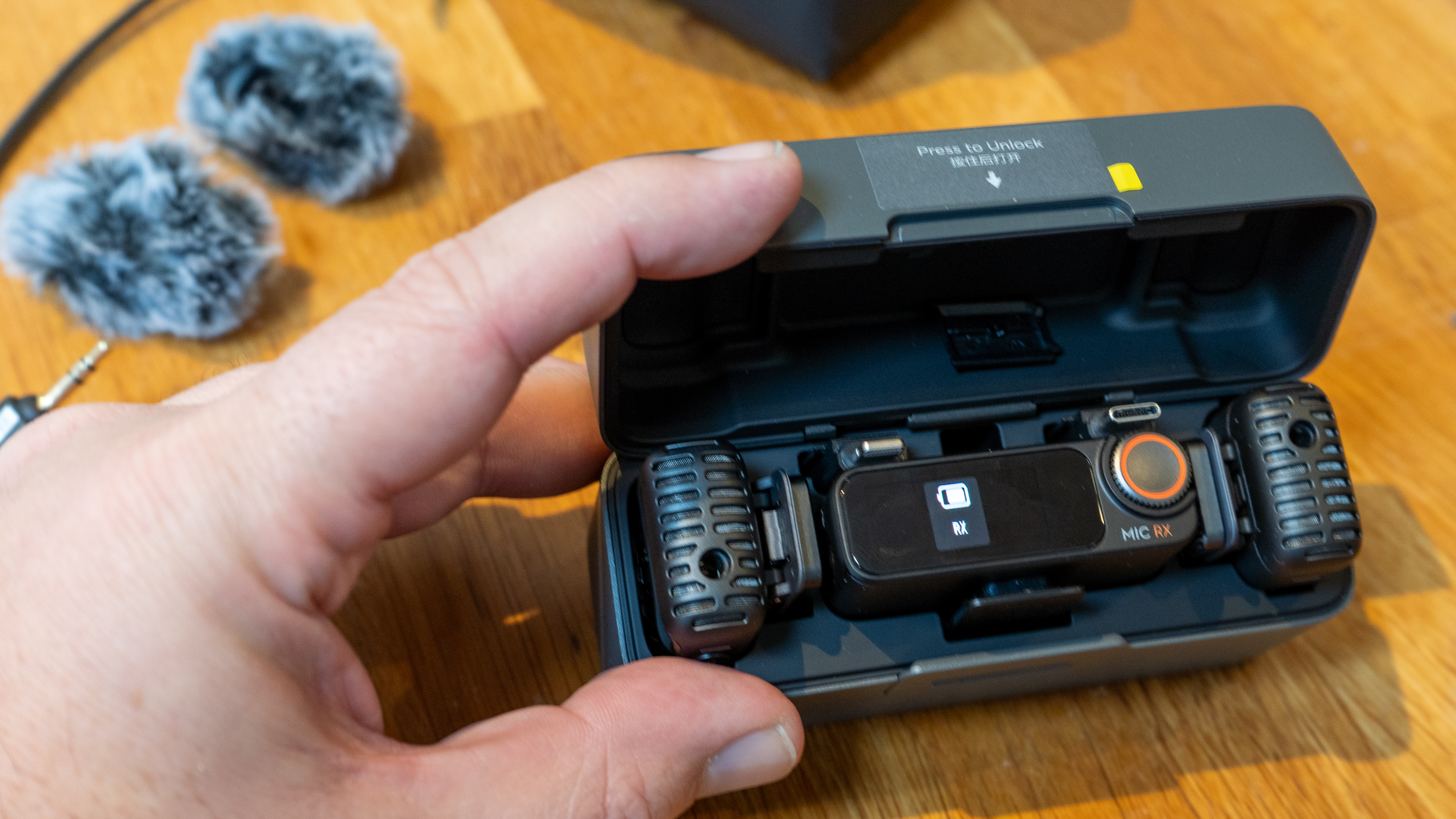
Pop the lid and the 4 charge indicator pinprick lights come on, as well as the display on the RX which gives you a clearer idea of the battery status of the individual Mics and the RX. These top up their charge from the case (if you have it) like Apple AirPods.

Connectivity is impressive for such a compact device; you can rest it in your camera's shoe and plug it into the microphone socket via 3.5mm. It'll also plug, via a slide-in adapter, into a phone's Lightning or USB-C socket. Both of these fit into the
When you hit record on the microphone, the recording begins being made directly to the microphone – no chance of interference, so you can take that in the edit (software like Final Cut Pro or Premier will easy align them based on the audio). The tiny 1.1-inch OLED gives instant visual feedback so you can tweak your levels if needed (though with 32-bit float sound there is some headroom – like RAW files providing an extra stop on photos!).

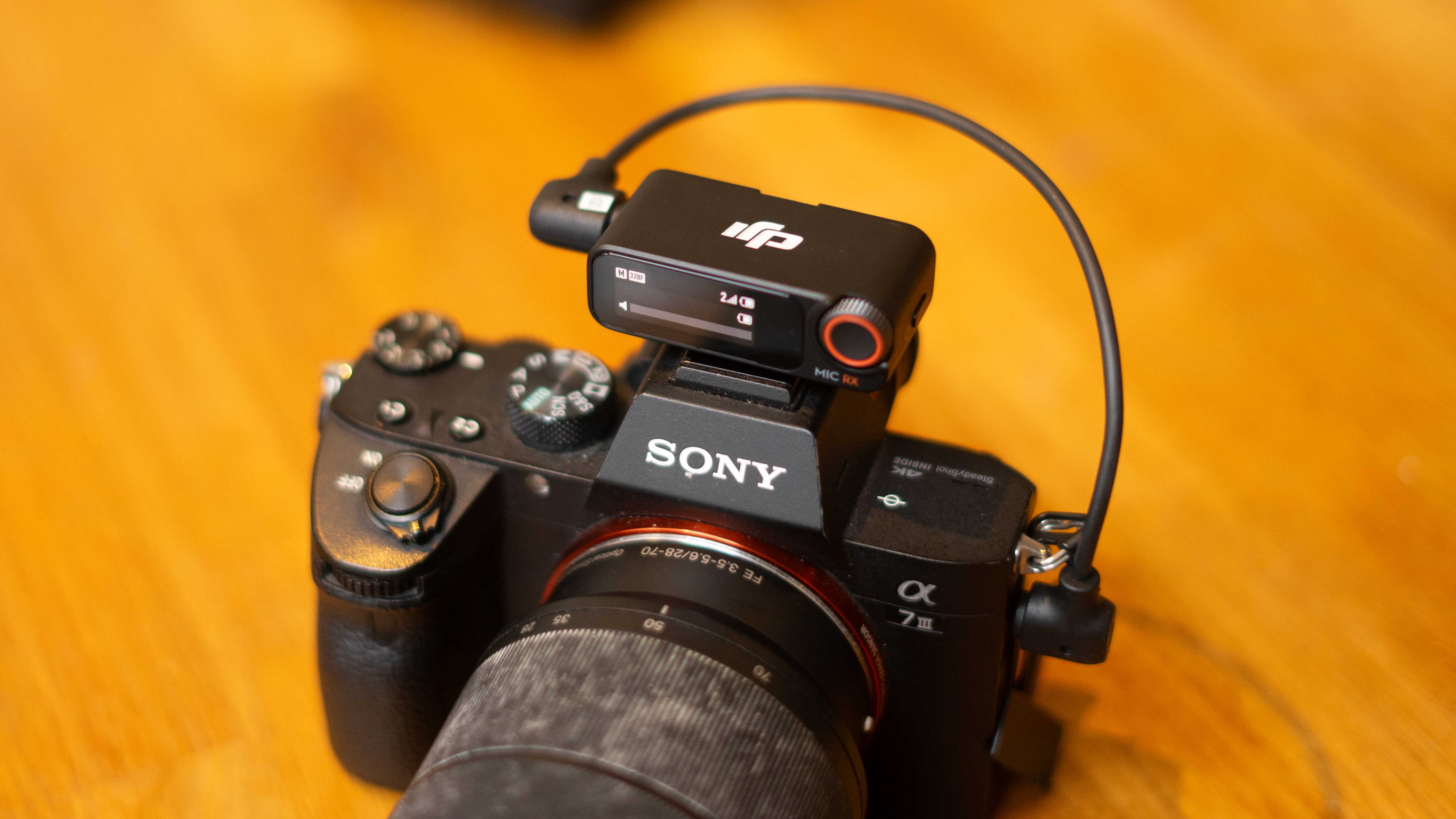
Performance
In our initial testing there were no complaints about the performance or the battery quality. Since DJI had already more or less nailed the user experience on the previous outing, there wasn't much to say. If I was really trying to find a problem, I'd say that the menu's frame rate was nearer to 5 or ten than a silky-smooth 100fps like on a premium phone, but that'd seem unreasonable.
Even if the lag are enough to be an issue with usability (and it really isn't), the wheel sidesteps it for key features. The only reason I devote so many words to it here is that you're likely to spend a bit more time with the options on the Mic 2 because you have
I am going to add some more feedback following planned tests in noisy environs this week, so please check this page again for the results of that, but my first impressions are extremely positive.
I also ran battery tests and found the device kept working another hour as promised, notably better than the Mic, though at 6 hours of use that is still one under the Røde, so packing up in the charging case to keep things topped up when the direct calls lunch is wise!
Sample Video
I'll post more in a couple of days, I promise, but here I am wearing the mic and recording to a Sony A7iii. Afterward I simply plugged the Mic into my laptop and copied the song file straight into FCPX, and asked it to synchronise it with the video clip, which it did.
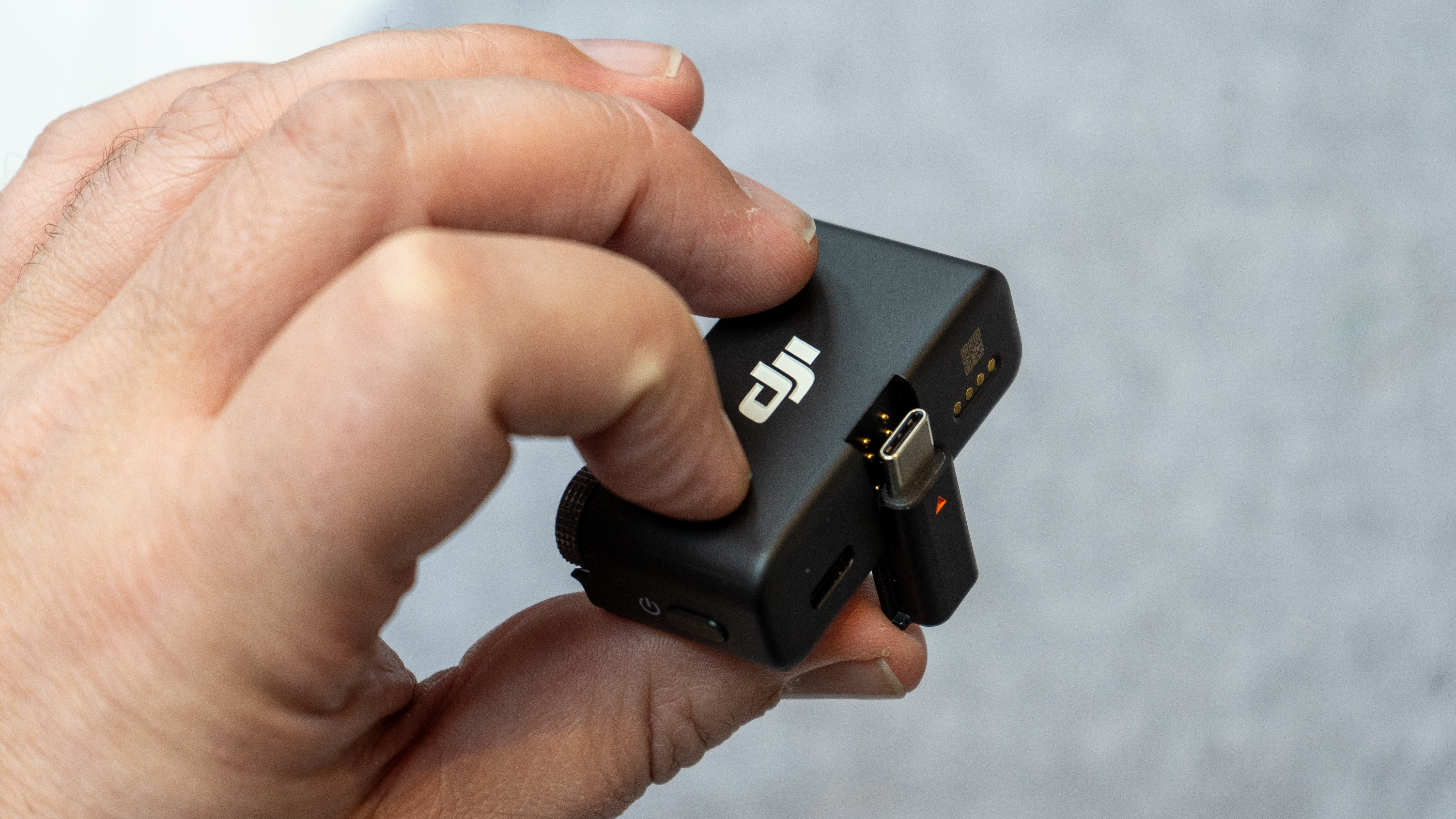
Overall Verdict
Although it isn't cheap, this is a premium product when it comes to output quality as well as the Apple-like sheen of the industrial design. I didn't think the DJI design team could make the original DJI Mic feel anything less than top-notch, but somehow this bundle, especially the charging case, pulls off comfortably.
I have to admit that I came with a slight worry that the increase in features was gonna make things slightly more complicated and certainly as you pick it up you might experience a very slight feeling of bewilderment, but that goes away very quickly as soon as you swipe your finger across the touchscreen. The addition of the wheel improves controls, too.
The ability to record a 'safety track' at -6dB is a nice touch, but highlights my only complaint – the fact there is enough storage for 14 hours at 24-bit is is good, but Røde do beat this. DJI, who have the features to use it, should include more storage. Still for most creators this is a robust solution in every sense; perhaps not enough to justify the upgrade from the original version, but a great tool for vloggers.
Should you buy the DJI Mic 2?
✅ Buy this if...
- You need to easily record high-quality sound wirelessly
- You want a solution with a rugged case
- You want wide compatibility
🚫 Don't buy this if...
- You want a very long battery life
- You already have the original
- You don't have a USB-C charger
Alternatives
The Røde Wireless Pro lacks DJI's rugged charging case, nor is it quite so chummy with phones, but it has a slightly longer battery life and does bring with it 32-bit float plus better on-board storage so
How I tested the DJI Mic 2
DJI kindly lent me a Mic 2 shortly before the release giving me chance to take it to a number of different locations and record sound. I attached it to my Sony camera. I also tested it connected to my iPhone. I will also post video soon testing with these other devices and in different locations.
I have also previously tested a single DJI Mic 2 as part of my review of the DJI Osmo Pocket 3, which you can watch and listen to.
To check how it performs against different background noises, I tried the microphone in a moving train, near a major road, and near some high-pitched noisy children. I measured the sound level of the background level using a decibel meter.

With over 20 years of expertise as a tech journalist, Adam brings a wealth of knowledge across a vast number of product categories, including timelapse cameras, home security cameras, NVR cameras, photography books, webcams, 3D printers and 3D scanners, borescopes, radar detectors… and, above all, drones.
Adam is our resident expert on all aspects of camera drones and drone photography, from buying guides on the best choices for aerial photographers of all ability levels to the latest rules and regulations on piloting drones.
He is the author of a number of books including The Complete Guide to Drones, The Smart Smart Home Handbook, 101 Tips for DSLR Video and The Drone Pilot's Handbook.
